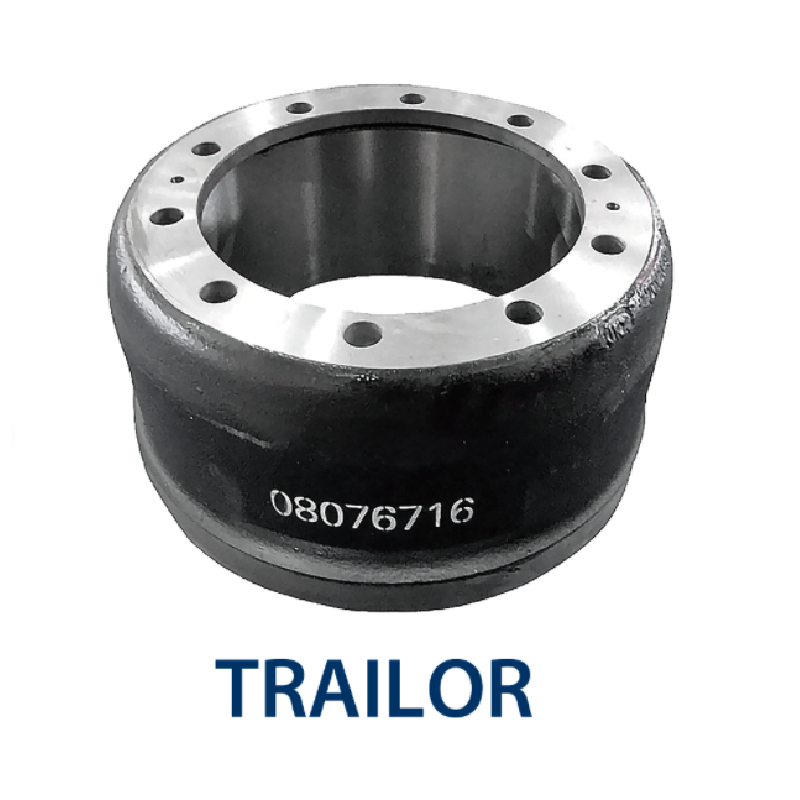Nov . 11, 2024 08:58 Back to list
brake drum lining
Understanding Brake Drum Lining Importance and Maintenance
Brake drum lining is a crucial component of brake systems in various vehicles, particularly those equipped with drum brakes. Unlike disc brakes, which use calipers and rotors, drum brakes rely on brake shoes that press against the inner surface of a rotating drum to create friction and slow down or stop the vehicle. This friction is generated by the lining material applied to the brake shoes. In this article, we will explore the importance of brake drum lining, the materials used, common issues, and maintenance practices to ensure optimal performance and safety.
The Importance of Brake Drum Lining
The primary function of brake drum lining is to provide the necessary friction to slow down or stop the wheels of a vehicle effectively. The effectiveness of brake lining material directly impacts braking performance, pedal feel, and overall vehicle safety. As the brake shoes press against the drum, the lining compresses, generating the required friction to decelerate the vehicle. High-quality brake drum lining not only enhances stopping power but also improves heat dissipation and reduces noise during operation.
Because drum brakes are generally less efficient than disc brakes, proper maintenance of the drum lining is vital. When the lining wears down excessively, the braking distance increases, which can lead to dangerous situations on the road. Therefore, understanding the types of materials used and their performance characteristics can help vehicle owners make informed decisions regarding repairs and replacements.
Materials Used in Brake Drum Lining
Brake drum linings are typically made from a variety of friction materials designed to withstand high temperatures and provide effective braking performance
. Common materials include1. Asbestos Historically, asbestos was widely used due to its excellent heat resistance and friction properties. However, due to health risks associated with asbestos exposure, its use has been largely phased out in modern vehicles.
2. Organic Materials These linings are composed of various organic fibers, such as rubber and resin. They provide good performance for light to moderate vehicle applications but may wear out more quickly under heavy use.
3. Semi-Metallic This type of lining includes a mixture of metallic fibers (such as copper, steel, or iron) along with organic materials. Semi-metallic linings offer better heat conduction and durability, making them suitable for heavier vehicles or more demanding driving conditions.
4. Ceramic Materials Ceramic linings are known for their longevity and ability to reduce noise. They provide consistent performance under a range of temperatures and are less abrasive on brake drums, leading to longer drum life.
Common Issues with Brake Drum Lining
brake drum lining

Several common problems can arise with brake drum lining that can affect a vehicle's braking performance
1. Worn Lining Over time, brake linings will wear down due to repetitive friction. Once the lining wears past a certain point, the vehicle may experience decreased braking efficiency, longer stopping distances, and increased noise levels.
2. Glazing Excessive heat can cause the brake lining to become glazed, resulting in a hard, smooth surface that reduces friction. Glazed linings can lead to diminished braking performance and may need to be replaced.
3. Contamination Oil, grease, or brake fluid can contaminate the brake lining, affecting its ability to create friction. This can lead to uneven braking and potential brake failure if not addressed promptly.
4. Cracking or Delamination High temperatures and stress can cause the brake lining to crack or separate from the brake shoe. This can result in severe braking issues and necessitate immediate replacement.
Maintenance Practices
To ensure optimal performance and longevity of brake drum lining, several maintenance practices should be followed
- Regular Inspections Routine checks of the brake system can help identify wear and other issues early. Look for signs of wear on the linings and inspect for glazing or contamination.
- Replace Worn Linings If the brake linings show significant wear, they should be replaced promptly to avoid decreased braking performance. Always replace shoes in pairs for balanced braking.
- Brake Drum Maintenance Along with lining replacement, it is essential to check the condition of the brake drums. They should be resurfaced or replaced if they are excessively worn or damaged.
- Adequate Brake Fluid Keeping the brake fluid at the recommended level and changing it as needed will ensure the braking system operates effectively.
In conclusion, brake drum lining plays a vital role in vehicle safety and performance. Understanding its functions, materials, and common issues can empower vehicle owners to maintain their braking systems effectively. Regular inspections and prompt maintenance are key to ensuring that the brake system remains reliable and responsive, paving the way for safer driving experiences.
-
Scania Brake Drums: OEM Quality for Optimal Safety & Durability
NewsAug.16,2025
-
R.V.I: Advanced Remote Visual Inspection for Precision
NewsAug.15,2025
-
Discover HYUNDA: Innovative Vehicles, Equipment & Solutions
NewsAug.14,2025
-
R.V.I: Unlock Advanced Insights & Real-time Performance
NewsAug.13,2025
-
Kamaz Brake Drum: Durable & Reliable for Heavy Duty Trucks
NewsAug.12,2025
-
Heavy Duty Iveco Brake Drum - Premium Quality & Safety
NewsAug.11,2025
